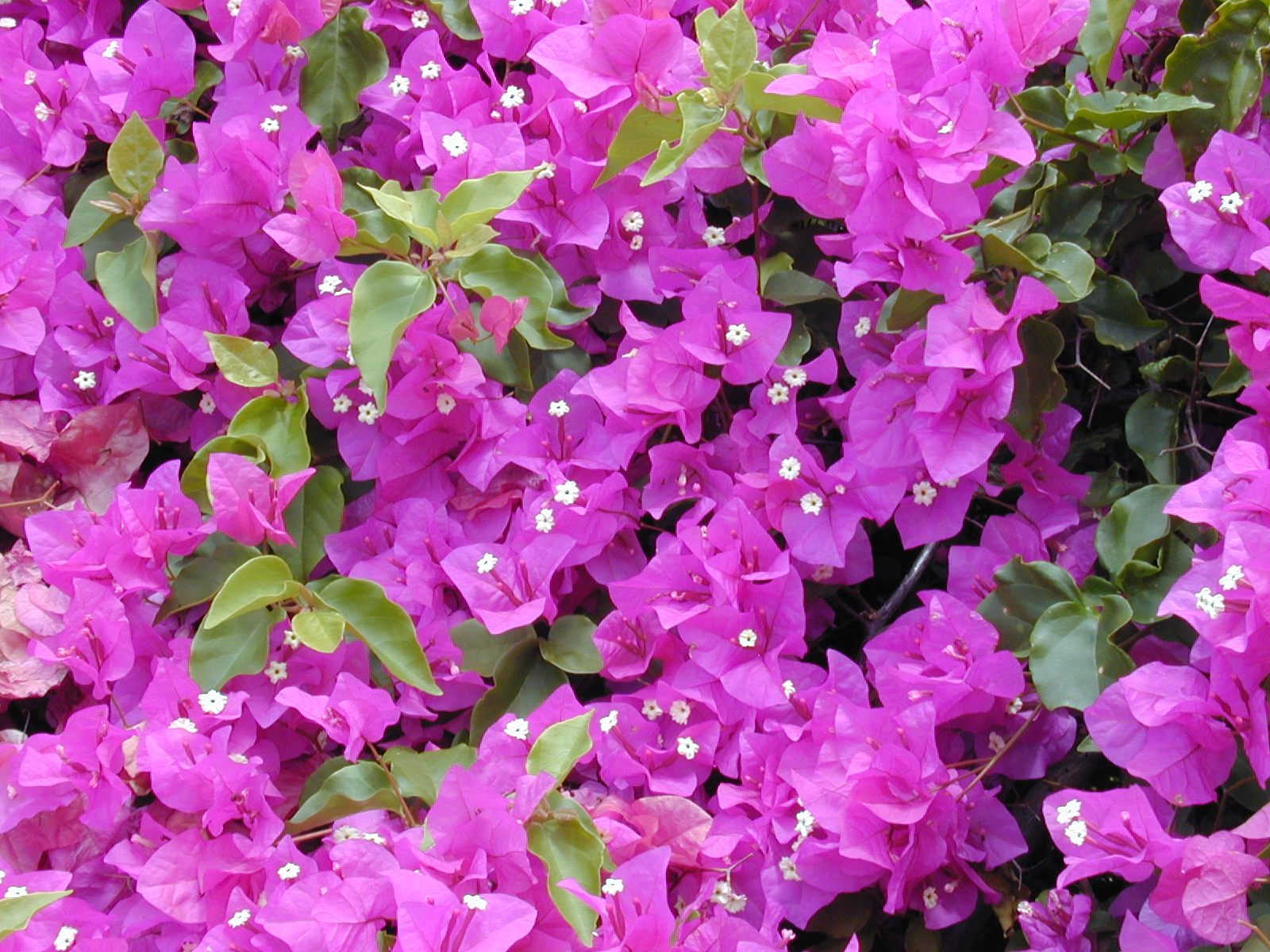| Posted on 7:25 AM | Posted in
Species
Bougainvillea spectabilis is a large climber with distinctive curved thorns, and hair on stems and leaves. The bracts are crinkled, fairly large, egg-shaped, and possess colors in the rose, rusty-red, and purple. Flowers are cream in color, slender, with very hairy tubes. Leaves are large, ovate to rounded, leathery in texture and hairy underneath. The bark is pale and corky. Branching is close and short, giving rise to a very dense plant. The first species collected, it was described from dried specimens by Willdenow (1798).
Bougainvillea glabra has thinner branches that spread in many directions and have distinctive pointed triangle-shaped bracts that come in a range of whites, lilacs, mauves, and purples. Thorns are short, thin, and curved at the tips. Leaves are fairly evenly elliptical, widest about the middle. The small cream flowers are relatively big and tube-shaped. The also tend to flower virtually continuously, and often down the entire length of the branch. Originally described and named by Choisy (1849).
Bougainvillea peruviana has a branching habit that is looser and more open. This is a climbing, spiny, spreading shrub with greenish bark. Thorns (spines) are thin, straight in youth and curved when older. Leaves are thin and ovate to broadly ovate. The small roundish bracts, usually in light to dark magenta colors, are quite delicate to the touch, and are crinkly in appearance. Flowering is recurrent after strong vegetative growth in response to dry weather. This species was described and named by Humbold and Bonpland (1808).
- Bougainvillea spectabilis
- Bougainvillea glabra
- Bougainvillea peruviana
Bougainvillea spectabilis is a large climber with distinctive curved thorns, and hair on stems and leaves. The bracts are crinkled, fairly large, egg-shaped, and possess colors in the rose, rusty-red, and purple. Flowers are cream in color, slender, with very hairy tubes. Leaves are large, ovate to rounded, leathery in texture and hairy underneath. The bark is pale and corky. Branching is close and short, giving rise to a very dense plant. The first species collected, it was described from dried specimens by Willdenow (1798).
Bougainvillea glabra has thinner branches that spread in many directions and have distinctive pointed triangle-shaped bracts that come in a range of whites, lilacs, mauves, and purples. Thorns are short, thin, and curved at the tips. Leaves are fairly evenly elliptical, widest about the middle. The small cream flowers are relatively big and tube-shaped. The also tend to flower virtually continuously, and often down the entire length of the branch. Originally described and named by Choisy (1849).
Bougainvillea peruviana has a branching habit that is looser and more open. This is a climbing, spiny, spreading shrub with greenish bark. Thorns (spines) are thin, straight in youth and curved when older. Leaves are thin and ovate to broadly ovate. The small roundish bracts, usually in light to dark magenta colors, are quite delicate to the touch, and are crinkly in appearance. Flowering is recurrent after strong vegetative growth in response to dry weather. This species was described and named by Humbold and Bonpland (1808).









